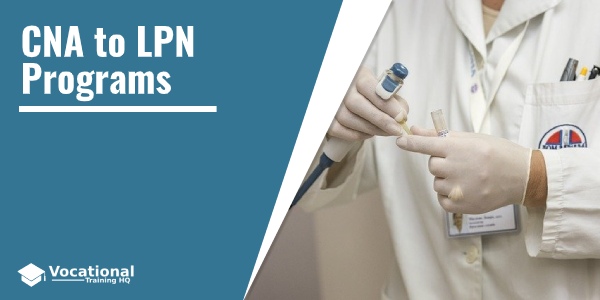The job of a nursing assistant is an entry-level position in the nursing field.
However, this does not lower the importance of their role in the nursing team.
Anyone with the experience as a certified nursing assistant knows what obstacles and challenges can arise every day.
Many LPNs and RNs start their career in nursing as a CNA.
In the position of a CNA, nurses can gain experience in basic care, interactions with patients and family, and working with superiors to do the job.
Besides, while working as a CNA, nurses get a sense of what the job is like and increase empathy.
The duties of CNAs include providing basic care and helping patients do things they can’t accomplish on their own.
CNAs work under the supervision of an LPN or RN.
While CNAs provide basic care, RNs and LPNs get free time to perform more complex tasks for which they need more advanced training and a license.
How Does a CNA Become an LPN?
CNA programs are available throughout the country and can be different from state to state.
Every state has its Board of Nursing as well as clinical and educational requirements.
To enroll in a CNA program, one needs a high school diploma.
Since this is the first line in nursing education, no previous knowledge in the field is required.
The duration of a program can range from 2 weeks (in full-time accelerated programs) to 12 weeks (in the part-time programs).
These programs include classroom coursework as well as supervised clinical experience.
After completing the program, students have to take and pass a certification test in their state (state by state info for LPNs).
The test usually consists of a written part and a practical skills test.
Since you are reading this article, you most likely wish to advance your education and acquire the position higher than a CNA.
The next step, in this case, is becoming an LPN.
Unfortunately, most CNA programs don’t carry any college credit or weight.
With that said, CNAs are effectively at the same starting point with their education as someone with no experience in nursing.
However, it’s not 100% true.
CNAs gain valuable experience and have an idea of the job of a nurse and what to expect with more advanced education.
CNA experience isn’t usually required for the LPN programs, but it is considered to be valuable and is usually asked for.
CNAs have a lot to learn to become LPNs.
LPNs have more power and responsibility.
They have to master and learn many skills and subjects.
They study such topics as wound care, medication administration, patient assessment, and catheter insertion.
They move from the position where they receive orders to the one where they give them.
Unlike CNA, LPNs need complex problem-solving and critical thinking skills.
For all these reasons, ensure that you are choosing a reputable school with a good NCLEX pass rate.
One way to find a good school is by asking current nurses about their school and education.
It can be valuable advice.
The transition from CNA to LPN involves a great change in duties, responsibilities, and scope of practice.
If you have a chance, it can be beneficial to shadow an LPN.
By doing so, you can gain some first-hand experience and understanding of the LPN’s work.
CNA to LPN Salary Comparison
- Alabama:
CNA – $22,690.
LPN – $36,300.
Percentage increase – 60.0%. - Alaska:
CNA – $37,520.
LPN – $53,760.
Percentage increase – 43.3%. - Arizona:
CNA – $29,790.
LPN – $51,670.
Percentage increase – 73.4%. - Arkansas:
CNA – $22,760.
LPN – $36,800.
Percentage increase – 61.7%. - California:
CNA – $32,770.
LPN – $52,670.
Percentage increase – 60.7%. - Colorado:
CNA – $30,150.
LPN – $48,690.
Percentage increase – 61.5%. - Connecticut:
CNA – $32,140.
LPN – $55,720.
Percentage increase – 73.4%. - Delaware:
CNA – $29,000.
LPN – $50,330.
Percentage increase – 73.6%. - District of Columbia:
CNA – $33,380.
LPN – $55,200.
Percentage increase – 65.4%. - Florida:
CNA – $25,230.
LPN – $42,960.
Percentage increase – 70.3%. - Georgia:
CNA – $23,530.
LPN – $40,250.
Percentage increase – 71.1%. - Hawaii:
CNA – $31,990.
LPN – $48,980.
Percentage increase – 53.1%. - Idaho:
CNA – $25,630.
LPN – $40,680.
Percentage increase – 58.7%. - Illinois:
CNA – $26,830.
LPN – $48,070.
Percentage increase – 79.2%. - Indiana:
CNA – $25,000.
LPN – $41,540.
Percentage increase – 66.2%. - Iowa:
CNA – $27,310.
LPN – $40,710.
Percentage increase – 49.1%. - Kansas:
CNA – $24,530.
LPN – $40,880.
Percentage increase – 66.7%. - Kentucky:
CNA – $25,160.
LPN – $39,460.
Percentage increase – 56.8%. - Louisiana:
CNA – $21,610.
LPN – $38,070.
Percentage increase – 76.2%. - Maine:
CNA – $26,220.
LPN – $43,680.
Percentage increase – 66.6%. - Maryland:
CNA – $29,700.
LPN – $51,980.
Percentage increase – 75.0%. - Massachusetts:
CNA – $30,960.
LPN – $55,190.
Percentage increase – 78.3%. - Michigan:
CNA – $28,750.
LPN – $46,660.
Percentage increase – 62.3%. - Minnesota:
CNA – $30,610.
LPN – $43,620.
Percentage increase – 42.5%. - Mississippi:
CNA – $21,640.
LPN – $36,840.
Percentage increase – 70.2%. - Missouri:
CNA – $24,690.
LPN – $39,600.
Percentage increase – 60.4%. - Montana:
CNA – $25,950.
LPN – $40,920.
Percentage increase – 57.7%. - Nebraska:
CNA – $26,260.
LPN – $40,630.
Percentage increase – 54.7%. - Nevada:
CNA – $33,650.
LPN – $53,500.
Percentage increase – 59.0%. - New Hampshire:
CNA – $30,390.
LPN – $49,040.
Percentage increase – 61.4%. - New Jersey:
CNA – $28,980.
LPN – $53,740.
Percentage increase – 85.4%. - New Mexico:
CNA – $27,280.
LPN – $47,770.
Percentage increase – 75.1%. - New York:
CNA – $34,300.
LPN – $47,170.
Percentage increase – 37.5%. - North Carolina:
CNA – $23,630.
LPN – $42,510.
Percentage increase – 79.9%. - North Dakota:
CNA – $31,600.
LPN – $43,200.
Percentage increase – 36.7%. - Ohio:
CNA – $25,850.
LPN – $41,320.
Percentage increase – 59.8%. - Oklahoma:
CNA – $24,050.
LPN – $39,290.
Percentage increase – 63.4%. - Oregon:
CNA – $31,660.
LPN – $50,160.
Percentage increase – 58.4%. - Pennsylvania:
CNA – $29,190.
LPN – $45,810.
Percentage increase – 56.9%. - Rhode Island:
CNA – $29,560.
LPN – $55,410.
Percentage increase – 87.4%. - South Carolina:
CNA – $24,590.
LPN – $40,090.
Percentage increase – 63.0%. - South Dakota:
CNA – $24,960.
LPN – $37,100.
Percentage increase – 48.6%. - Tennessee:
CNA – $23,850.
LPN – $37,920.
Percentage increase – 59.0%. - Texas:
CNA – $25,410.
LPN – $46,110.
Percentage increase – 81.5%. - Utah:
CNA – $24,910.
LPN – $42,720.
Percentage increase – 71.5%. - Vermont:
CNA – $28,620.
LPN – $46,790.
Percentage increase – 63.5%. - Virginia:
CNA – $26,040.
LPN – $41,450.
Percentage increase – 59.2%. - Washington:
CNA – $30,150.
LPN – $50,740.
Percentage increase – 68.3%. - West Virginia:
CNA – $25,210.
LPN – $36,050.
Percentage increase – 43.0%. - Wisconsin:
CNA – $27,980.
LPN – $43,820.
Percentage increase – 56.6%. - Wyoming:
CNA – $29,010.
LPN – $45,590.
Percentage increase – 57.2%.
Advantages of CNA to LPN Training
The CNA to LPN programs has multiple advantages.
They include expanded job opportunities, increased knowledge and responsibility as well as a sense of job importance, and, of course, a higher salary.
According to the Bureau of Labor Statistics, the median salary for nursing assistants is $24,400.
To compare, the median salary of LPN/LVN is $41,540.
These numbers are median incomes and actual salary can vary depending on the type of facility and geographical location.
To find all CNA to LPN bridge programs, you need to do some research.
LPN programs can be completed full- or part-time with the option to continue working as a CNA until you graduate as an LPN.
The duration and costs of the programs can vary by school.
There are also financial aid options available.
Read the full guide: How to Become a Licensed Practical Nurse


